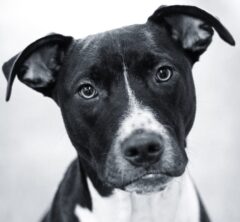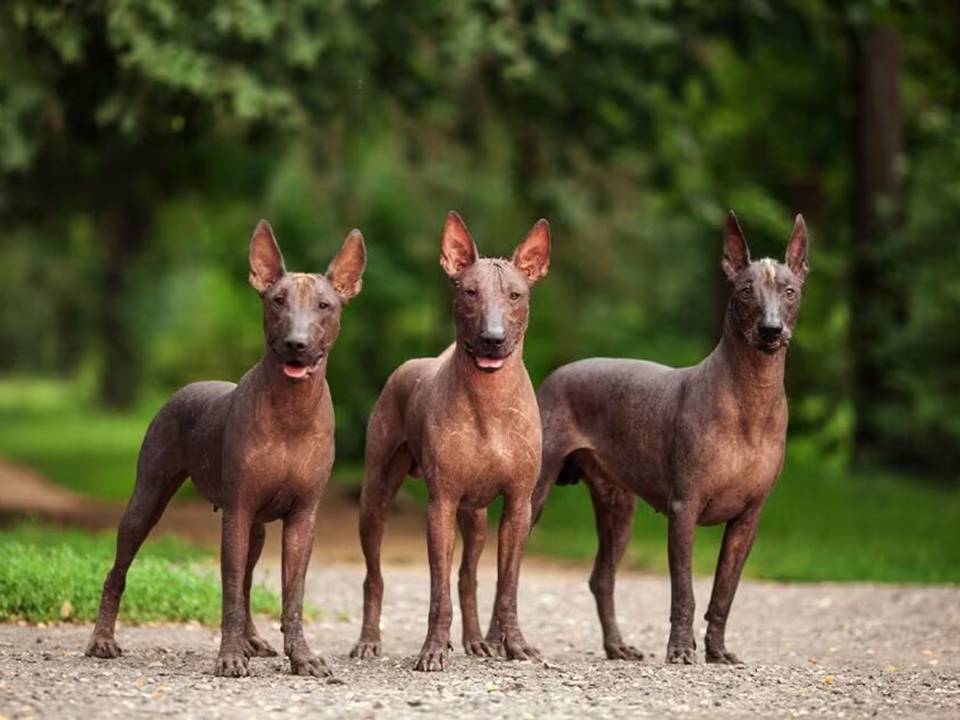The Mexican Hairless Dog
The Xoloitzcuintli, often called the “Xolo,” is one of the oldest and most culturally significant dog breeds in the world. Known for its hairless and wrinkled skin, this breed has fascinated historians, archaeologists, and dog lovers for centuries. Native to Mexico, the Xolo has a history that stretches back thousands of years, deeply intertwined with the culture, mythology, and daily life of ancient Mesoamerican civilizations. Its unique appearance, adaptability, and spiritual importance make the Xolo more than just a dog—it is a symbol of endurance and cultural heritage.
Ancient Origins: A Pre-Columbian Breed
The Xoloitzcuintli is one of the oldest dog breeds in the world. Archaeological evidence shows that the breed existed in the Americas for over 3,000 years, long before the rise of ancient Mesoamerican civilizations. The name “Xoloitzcuintli” comes from the Nahuatl language, spoken by the Aztecs. It combines “Xolotl,” the god of death, fire, and lightning, with “itzcuintli,” meaning dog.
Xolotl, the deity linked to the breed, was believed to guide the souls of the dead through the underworld. The Xolo served as his earthly companion. This connection ties the breed not only to ancient history but also to spiritual and religious beliefs.
The Xoloitzcuintli likely descended from the first domesticated dogs that arrived in the Americas with early human migrants. These people crossed the Bering land bridge from Asia during the Ice Age. Genetic studies suggest the Xolo shares ancestry with other ancient hairless breeds, such as the Peruvian Hairless Dog and the Chinese Crested. However, the Xolo’s isolation in Mexico allowed it to develop into a distinct breed, well-suited to the region’s climate and culture.
Role in Mesoamerican Civilizations
The Xoloitzcuintli played a significant role in pre-Columbian societies, especially among the Toltec, Maya, and Aztec peoples. These cultures saw the Xolo as more than just a pet. It held importance in religious ceremonies, medicine, and even as a food source.

Spiritual Significance
The Aztecs revered the Xolo for its spiritual role. They believed the dog could guide the souls of the dead to the afterlife. To ensure safe passage, people often buried Xolos alongside their deceased owners. The breed’s connection to Xolotl, the god of death, made it a sacred animal.
Healing Powers
The Xolo was also valued for its healing abilities. Its warm, hairless skin was thought to relieve ailments like arthritis and asthma. People would lie next to the dog to ease their pain, using it as a natural “heating pad.”
Rituals and Sacrifices
The Xolo’s association with death led to its use in religious rituals. The Aztecs sacrificed Xolos as offerings to their gods, particularly Xolotl. However, not all Xolos faced this fate. Some were kept as companions, while others were raised for their meat, which was considered a delicacy for special occasions like weddings and ceremonies.
The Xolo’s Decline and Rediscovery
The arrival of Spanish conquistadors in the 16th century marked the beginning of the Xolo’s decline. The Spanish viewed indigenous practices, including the sacrificial and culinary uses of Xolos, as barbaric. They introduced European dog breeds, which gradually replaced the Xolo. Over time, the breed’s numbers dwindled, and it nearly faced extinction.
Survival in Remote Areas
Despite these challenges, the Xolo survived in remote rural areas. Indigenous communities, who preserved their cultural traditions, kept the breed alive. This resilience allowed the Xolo to endure through the centuries.
Revival in the 20th Century
In the 1900s, efforts to revive the Xolo gained momentum. Mexican artists like Diego Rivera and Frida Kahlo played a key role in this revival. Rivera featured Xolos in his murals, while Kahlo kept them as pets and included them in her artwork. Their efforts helped rekindle interest in the breed.
In the 1950s, the Mexican government recognized the Xoloitzcuintli as a national treasure. This led to initiatives to protect and preserve the breed. The Fédération Cynologique Internationale (FCI) officially recognized the Xolo in 1956, and the American Kennel Club (AKC) followed suit in 2011.
The Xolo Today
Today, the Xoloitzcuintli is no longer just a dog of myth and legend. It is a beloved companion for many people in Mexico and around the world. The breed comes in three sizes—standard, miniature, and toy—and has both hairless and coated varieties. However, the hairless type remains the most iconic.
Personality and Traits
The Xolo is known for its intelligence, loyalty, and calm demeanour. These traits make it an excellent family pet. Despite its ancient origins, the breed adapts well to modern life.
Cultural Symbol
The Xolo continues to symbolize Mexico’s rich cultural history. It often appears in Mexican festivals, such as Día de los Muertos (Day of the Dead), where its role as a guide to the underworld is honoured. The breed’s unique appearance and heritage also make it a popular subject in contemporary art and fashion.
Conclusion
The Xoloitzcuintli is much more than a dog breed. It is a living relic of ancient Mesoamerican civilizations. From its role as a spiritual guide in pre-Columbian times to its status as a modern-day companion, the Xolo has endured centuries of change. Its resilience and deep connection to human culture make it a powerful symbol of Mexico’s enduring legacy.


